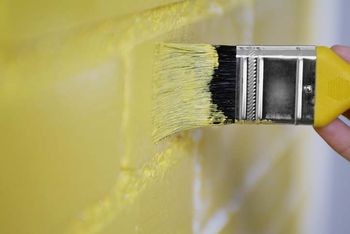 Winning the war against mold involves many different tools and strategies. The most important thing you can do is learn about the underlying causes of residential mold—namely excess moisture and stagnant air. By increasing your home’s ventilation and moderating humidity levels, you can prevent mold before it starts.
Winning the war against mold involves many different tools and strategies. The most important thing you can do is learn about the underlying causes of residential mold—namely excess moisture and stagnant air. By increasing your home’s ventilation and moderating humidity levels, you can prevent mold before it starts.
But let’s face it, we all live busy lives. Most of us don’t have the time or energy to constantly think about mold and its underlying conditions. A passive solution would be better. Automated climate controls are already showing up in houses, and these do hold promise for mold prevention. Another technology, not so glamorous, is mold-resistant paint. This is something anybody can buy and use. The question is, does it really work? Is it really effective in preventing residential mold growth?
How does it work?
Ordinary paint would allow mold to enter and access materials behind the paint in order to feed and colonize. Mold-resistant paint contains anti-microbial properties and substances that give extra protection to any painted surface, preventing mold spores from getting in and setting up shop. It won’t eliminate mold that’s already growing, but it will reduce the odds of new mold growth.
In terms of where this type of paint should be applied, the most logical places are areas of the home with more exposure to moisture and humidity. Basements, kitchens and bathrooms are best examples. Homeowners who use mold-resistant paint in basements typically apply the paint to ceilings and floors, in addition to walls.
Applying mold-resistant paint the right way
This type of paint will only be effective if you use the proper technique to apply it. The first step is to make sure there’s no existing mold on the surface you’re going to paint. Bringing a mold remediation professional into your home is a good way to make sure any existing problems have been dealt with. If the existing surfaces are overrun with mold, they need to be taken out and replaced. People often assume that existing mold problems will always be visible, but this simply isn’t the case.
Once existing mold issues have been addressed, it’s crucial to follow the manufacturer’s instructions for applying the paint. This usually involves a coating of bleach before applying the paint, usually at a ratio of three parts water to one part bleach. Using bleach always requires extreme care and safety precautions.
After that, the wall needs to be washed thoroughly and allowed to dry. Then you can finally apply the mold-resistant paint. The anti-microbial properties will create a seal that makes the surface much less hospitable to mold.
Where to buy mold-resistant paint
Mold-resistant paint has gained considerable popularity in recent years, and many DIY sites recommend using it. As a result, home and hardware stores now widely stock mold-resistant paint in a variety of colors. And of course, there’s always the online market.
The bottom line
While mold-resistant paint is certainly not a miracle solution for keeping mold out of your home, it can certainly be a useful preventative measure when used correctly. A complete strategy for preventing troublesome mold problems in your home involves special attention to moisture and ventilation, and the use of professional mold remediation services to keep small problems from becoming big ones.

